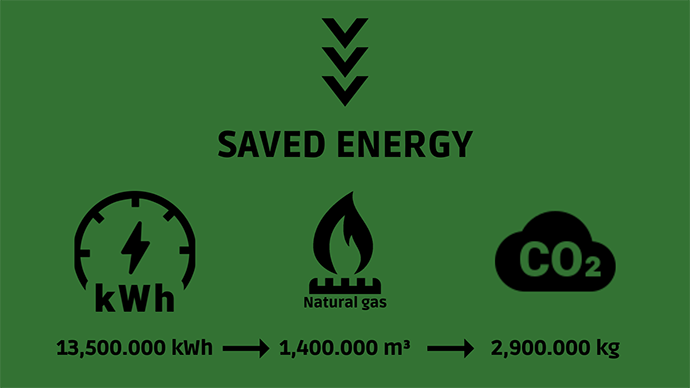Resource-saving production
Nature is our basis for life. However, it is limited. The basic requirement for sustainable manufacturing is therefore that we only use nature within this margin.
Leather is probably the oldest example of circular economy. In fact, since the dawn of time, man has used the hides and skins of the animals he hunted for food and incorporated them into his culture. Using cattle hides to make leather prevents wasting a renewable resource and thus reduces the need for plastics as well as other synthetic materials from non-renewable sources.
However, to deserve the designation "sustainable," leather must also be produced in a way that conserves resources. It would be absurd if more resources were wasted than saved in its production.
In addition to the permanent further development of tanning recipes to reduce energy and chemical consumption (e.g. Xgreen, Xloop, etc.), optimized production processes, sensible energy recovery or the closing of cycles of material and energy flows help to reduce the use of resources in all areas.
The Feldbach site has already been supplied with solar energy since 2015. A system with 588 modules and a nominal output of 149.94 kWp was installed on the roof of the plant. The expected annual electricity production is around 168,000 kWh. This corresponds to a saving of around 17,000 m³ of gas. Comparable systems are already being purchased for the other locations.
By renewing the aeration equipment and optimizing the blower stations for generating the process air in the wastewater treatment plants, energy consumption was reduced by around 36 %. The annual savings are over 2,100,000 kWh or 210,000 m³ of gas.
By-products such as tissue residues are processed into animal fat, which can then be used as an alternative fuel. The resulting annual energy output amounts to approx. 11,200,000 kWh, for which approx. 1.2 million m³ of gas would have to be burned.
Resources can also be saved through well planned recycling of residual materials. Therefore, the avoidance of waste has top priority at BOXMARK. Our zero-waste strategy has already reduced the general volume of waste by more than 80%. For example, skin cuttings serve as raw material for the collagen industry and leather scraps are passed on to bag and belt manufacturers.















